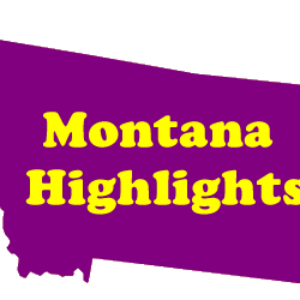Jackson Hewitt Tax Service, 411 24th St W, 59102, 829-1616, Tom Kula/Jason Welnel, service
Billings Vacation rentals, 4314 Pine Cove Rd, 59106, 860-0083, Jenna O’Brien, real estate rental
Black Montana Trucking, 1208 Cresthaven Way, 59102, 697-0197, Luke Atwell, service
Jay Bird Builders, 29 1/2 Alderson Ave, 59101, 321-9701, Collin Blackmore, general contractors
Resolved Exteriors, 616 Clark Ave, 59101, 308-1815, James Gilbert, general contractors
Fishers of Men Foods inc., 300 S 24th St W, 59102, 956-602-2738, Miguel Garcia, retail sales
Radke Drywalls, 29 1/2 Adams St, 59101, 696-8897, Christopher Radke, general contractors
Barger Platinum Plumbing, 14 32nd St W, 59102, 623-0987, Marvin Barger, plumbing contractor
MJA Roofing, 1139 69th St W, 59106, 561-543-6215, Neiset Aldana, roofing contractor
Valet Today Cleaners, 2434 Grand Ave, 59102, 655-9196, MC Cleaners, cleaners & Laundromats
Think Little Drop-In, 2085 Lakehills Dr, 59105, 281-2509, Angelia Smith, service
Jackson Hewitt Tax Service, 114 Grand Ave, 59101, 829-1616, Tom Kula/Jason Welnel, service
Foxy Lou’s Boutique, 1523 Oxbow Circle, 59105, 801-546-0261, Fallon Demet, retail sales
Larson and Associates PLLC, 2200 Rosewyn Ln, 59102, 371-1831, Connor Larson, Misc
Ali Hanson Photographer, 3624 Spotted Jack Loop N, 59101, 850-8680, Ali Hanson, service
VIM Collective, 131 Moore Ln Ste D, 59101, 208-1924, Tiffany Russell, solo practitioner
Higher Self Awareness LLC, 1212 Grand Ave Ste 6, 59102, 670-7146, Meredith Eckerdt, solo practitioner
Ken’s Sharpening and Restoration, 6427 Signal Peak Ave, 59106, 360-348-2945, Kenneth Kiesow, service
NAPA Auto Parts, 3175 Grand, 59102, Stuart Duncan Mgr, retail sales
Jack’d up Construction, 1115 Arlington Ave SW, 59101, 200-1245, Jack Workman, general contractors
Adventure Bound Travel, 7033 Copper View Way, 59106, 541-663-6388, Amy Shinsel, service
Owens Construction Inc, 635 Metcalf Rd, El Dorado KS 67042, Megan Derby, 316-321-2275, general contractors
Urbina Construction, 9 Vista Dr, 59102, 281-3962, Alfredo Urbina, general contractors
Rotar construction, 1911 8th Ave N #5, 855-3942, Jared Rotar, general contractors
Backcountry Glamping MT, 1134 N 31st St, 59101, 927-9120, Angela Stump, service
Bar SD Construction, 1931 Alderson Ave, 59101, 699-3137, Keith Tipton, general contractors
Christopher Minor, 1301 industrial Ave Apt 85, 59101, 876-7501, Christopher Minor, service
Bear Head LLC, 1135 N 23rd St, 59101, 697-3242, Michael Spangler, retail sales
SGM Services, 5918 Creek Dr, 59106, 671-3966, Steven Martin, service
Trimmed To Fit LLC, 2707 Broadwater Ave, 59102, 697-1868, Ashely Foreman, general contractors
DC Paintings & Coatings, 106 Upper Flat Rd, 930-0183, Columbus 59019, Dan & Christine Henkel, service
Good’s Holistic Healing, 1925 Grand Ave Ste 13B, 59102, 647-7300, Keith Good, service
Lost River Construction, 10671 W Treeline CT, Boise ID 83713, 208-703-5417, Julie Jensen, roofing contractors
It’s About Time/Kari’s Music Studio, 1650 Mary St, 59105, 998-7953, Karolyn Jones, service
Old Soldier Equipment Company LLC, 47 Sheep Mtn Rd, Red Lodge 59068, 307-690-7556, Brad Barker, general contractors
Val’s Transportation, 2815 5th Ave S, 59101, 702-5983, Valerie Meza, service
406 Concrete, 2003 LaBrea, 59102, 998-9570, 59102, Sean Garcia/Cody Bonner, general contractors
MCP Group LLC, 1302 Avenue D, 59102, 671-6499, David & Kristi Halland, real estate rental
Newcastle Home Inspections, 16 Grassland Way, Roundup 59072, 331-0047, Douglas Irish, service
R&R Transportation, 638 Miles Ave #2, Ryan Ireland/Rebecca Wilkins, service
Fallon Demet Photography, 1523 Oxbow Circle, 59105, 801-546-0261, Fallon Demet, service
Sheep Mtn Builders, 2608 Topeka Dr, Laurel 59044, 876-6887, Zach Norris, general contractors
Clean By Design, 346 Delta Circle, 59102, 969-1387, Karla Hartford, service
Entrepreneur Advisors Inc., 2051 Custer Ave, 59102, James Schrage, service
DLS outdoor Services, 6318 Bear Paw Dr S, 59106, 670-7234, Darrell Sept, service
My Mobile Therapy, 1807 Sunrise, 59101, 696-9372, Keith Carpenter, services
Grizzly Fence and Haul Away LLC, 925 Yellowsjackets Way #2, 59106, 598-6908, Nicholas McPhail, service
Prototype Space, 4215 Montana Sapphire Dr #410, 59106, 694-2578, Glenda Meade, service
Faith Technologies Incorporated, 201 Main St, 59105, 920-225-6500, Jon Veter, Mgr., electrical contractors
Wardens West Casino, (JDS II, LLC), 3189 King Ave W Ste A, 59102, 534-6298, Liquor license
Karin Rae, 703 Shamrock Ln, 59102, 698-3468, Amber Critelli-Maichel, retail sales
Montana Development Co, 2820 2nd Ave N, 59101, 294-3710, Brad Constantine, service
Thatsninja LLC, 2927 Monty Circle, 59106, 998-7469, Jonah Sullivan, service
B&B Cabinets and Drywall, 2312 Atchison, Laurel 59044, 940-5426, James Ball/Gaspar Barragan, general contractors
Pure Light Power, 2718 Montana Ave Ste 310, 59101, 541-816-4047, Reba Stephens, service
Mo Nava Express, 710 Wild Rose Ave, 59101, 647-7653, Mona Rae Nava, service
Montana Block LLC, 2601 Terry Ave, 59102, 861-9285, Brittany Martishius, retail sales
Hofer Builders, 8126 Wade St, Shepherd 59079, 670-0000, Benny Hofer, general contractors
Justin Stockfish Construction, 3 Clover Pl, 59102, 690-6738, Justin Stockfish, general contractors
LV’s Detailed Auto & Supply LLC, 2310 Avenue C #2, 59102, 200-4317, Logan Paoli, service
Stillwater Venture Capital LLC, 64 Travois Trail, Nye MT 59061, 281-8008, Jason Pitts, general contractors
Marlow Group LLC, 1643 24th St W 102, 59102, 821-3199, Cory Marlow, service
Asphalt Surface Technologies Corporation, 8348 Ridgewood Rd, Saint Joseph MN 56374, general contractors
ATCPNW Tree Farm, 517 Shiloh Rd, 59106, 272-7220, Scott Reichardt, retail sales
ATCPNW Tree Farm, 2335 Lewis Ave, 59102, 272-7220, Scott Reichardt, retail sales
Kaz’s Sweet Treats, 3282 Granger Ave E #4, 59102, 839-0627, Kazmira Martinez, retail sales
Naz Sanks Counseling PLLC, 3789 Donna Ct, 59102, na, Nazgul Sanks, service
Morning Start Property LLC, 1836 Songbird Dr, 59101, 661-5697, Dale Jones, service
Mr Mow It All 406, 4242 Bennett Ave, 59105, 855-0710, Jason Clemmer, service stations
Purple Snow Promotional, 1138 16th St West Ste 10, 59102, 647-0252, Hans Abbey, retail sales
Dunn Construction, 6210 Horsethief Ln, Shepherd MT 59079, 690-8396, Steve Dunn, general contractors
McArty Installation Service, 5224 Central, 59106, 591-7059, Mike McArtry, service
Bakken Tree Service, 1016 McKenney Rd, 59105, 591-4778, Michael Bakken, service
Jeff Preator Construction, 3465 St Johns Ave, 860-3867, Jeff Preator, general contractors
RP Homes, 1219 Harney Dr, 59101, 208-317-0287, Ethan Griffel, real estate rental,
Southern Touch Renovations, 217 Jackson St, 59101, 561-5422, Keith Barton, general contractors
TruNorse Contracting, 2901 Monad Rd #43, 59102, 200-0702, Scott Forslund, general contractors
A2Z Mechanical and household Services, 3458 Wasco Ave, 59101, 661-3177, Allen Megaard, service







